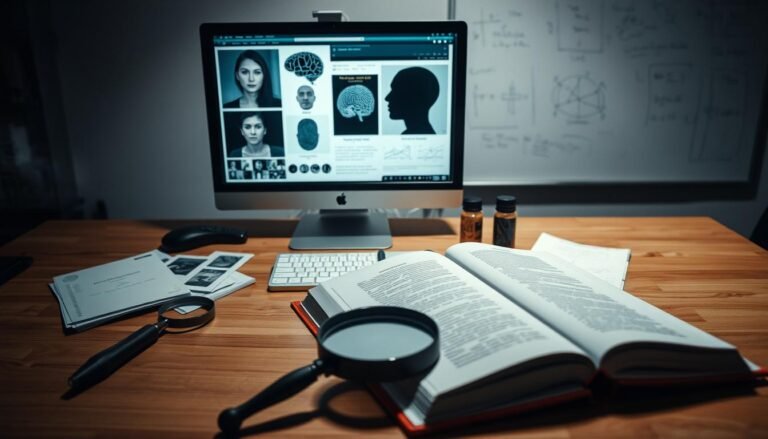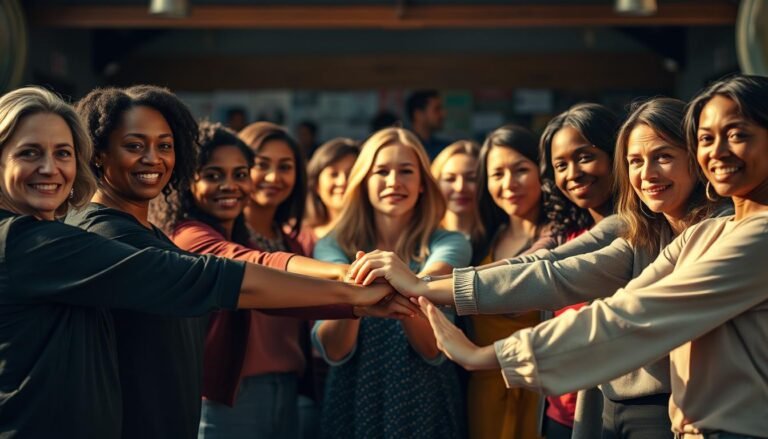
First Impressions Psychology: Why They Matter

First impressions are formed within a remarkably short span of time, often within a mere few seconds. The process is fundamentally psychological, activated by our brains’ innate ability to quickly assess and categorise information regarding those we meet. Various factors influence this rapid evaluation, including nonverbal cues, prior attitudes, and the interaction context.
Nonverbal communication plays a crucial role in shaping these initial judgments. Body language, facial expressions, tone of voice, and eye contact are critical components of how we interpret the intentions and emotions of others. For instance, a warm smile or open posture can create a favourable impression, while crossed arms or averted eyes may lead to negative perceptions. Such nonverbal cues can convey trustworthiness, confidence, or discomfort, influencing how we perceive someone’s character in those fleeting moments.
Additionally, our pre-existing attitudes toward individuals from certain groups can colour our first impressions. Cognitive biases, such as stereotypes, can unconsciously guide our judgements, often leading to skewed assessments based on limited information. This phenomenon emphasises the need for mindfulness regarding our preconceived notions, as they may distort our understanding of the person we encounter.
Context also plays an indispensable role in first impressions. The environment in which we meet can significantly impact our perceptions. For example, a formal setting may create expectations for professionalism, while a casual environment may foster more relaxed interactions. Understanding the interaction between context and first-impression psychology enables individuals to navigate social situations more adeptly.
The ‘thin slicing’ concept further illustrates how we judge quickly based on minimal information. Our brains excel at identifying patterns and making rapid evaluations, which allows us to form first impressions in psychology with surprising accuracy. However, while this skill can be beneficial, it can also lead to misconceptions if not tempered with greater discernment.
The Importance of First Impressions Psychology

First impressions play a significant role in shaping perceptions and influencing relationships across various aspects of life. Research consistently indicates that initial encounters often set the tone for subsequent interactions, whether in personal relationships, professional settings, or social circles. The psychological impact of these early encounters can be profound and long-lasting.
In personal relationships, first impressions can determine the direction of future interactions. For example, individuals often rely on first impressions psychology to gauge compatibility. A positive initial interaction may lead to trust and emotional bonds, while a negative one can stall or sabotage potential connections. This tendency is rooted in the “halo effect,” where individuals ascribe positive traits to someone based on a singular outstanding quality, highlighting the importance of making a stellar first impression.
In professional environments, the consequences of first-impression psychology can be even more pronounced. Research suggests that hiring managers often judge a candidate’s likability and competence within the first few seconds of meeting them. This initial assessment can potentially override qualifications and experience, emphasising the need for job seekers to convey confidence and professionalism from the outset. Furthermore, making a solid first impression in corporate settings can facilitate networking opportunities and collaboration, ultimately contributing to career advancement.
Social interactions also hinge on first impressions, which can dictate how individuals are perceived within various groups. Whether in social gatherings, community events, or online platforms, initial judgements can influence whether one feels welcomed or excluded. Studies show that it takes just a fraction of a second for individuals to form impressions about others, underscoring the necessity of being mindful of one’s demeanour, appearance, and communication style during initial encounters.
Given the importance of first impressions in shaping relationships and experiences, investing effort into creating a positive initial impact is essential. Recognising the psychological principles at play can lead to improved connections in all areas of life.
Factors Influencing First Impressions Psychology

First impressions are critical in shaping how individuals perceive one another, often happening within mere seconds of an encounter. Various factors contribute to forming these initial impressions, with appearance being one of the most prominent influences. An individual’s clothing, grooming, and overall style can significantly affect how they are viewed regarding professionalism, confidence, and social status. For example, someone dressed in formal attire may be perceived as more competent and authoritative than another in casual wear.
Body language is another vital aspect that influences first impressions in psychology. Non-verbal cues such as posture, gestures, and eye contact can convey confidence, insecurity, openness, or defensiveness. A firm handshake, for instance, often communicates assertiveness, while avoiding eye contact may imply shyness or dishonesty. Such non-verbal signals play a significant role in how initially perceived traits are formed, potentially leading to favourable or unfavourable biases based on preconceived notions related to body language.
The tone of voice is also an essential component in forming first impressions. How individuals articulate their thoughts, including pitch, speed, and clarity, can affect how their message is received. A calm and steady voice might be interpreted as confidence and authority, while a shaky or high-pitched tone could evoke doubt regarding one’s expertise or intentions. These auditory cues contribute to the perception of credibility and are crucial in high-stakes environments, such as job interviews or public speaking.
Finally, situational context cannot be overlooked. The environment in which a meeting or encounter occurs can set the tone for the interaction. For instance, a formal business meeting may lead to a different first impression of psychology than a casual social gathering. Recognising these contextual factors can aid individuals in navigating their interactions more effectively, ultimately leading to more positive first impressions.
Common Pitfalls in First Impressions Psychology
Creating a positive first impression is crucial in both personal and professional settings. However, many individuals often fall into common pitfalls that hinder their effectiveness. One prevalent mistake is overconfidence. While confidence can appeal, projecting an air of unwarranted confidence can be perceived as arrogance. Such a demeanour may distance you from others, making them less receptive to your intended message. For instance, someone who enters an interview too aggressively may inadvertently overshadow their qualifications, leading the interviewer to focus on their demeanour rather than their skills.
Another significant pitfall is the misreading of social cues. Non-verbal communication plays a fundamental role in how impressions are formed. Individuals who fail to recognise or misinterpret body language, tone of voice, and facial expressions may send mixed messages. For example, someone who approaches a conversation without acknowledging the other person’s discomfort—possibly indicated by crossed arms or lack of eye contact—may unintentionally escalate tension instead of fostering rapport. A keen awareness of these social signals is essential in making effective connections.
Additionally, relying too heavily on superficial characteristics can also damage first impressions. Judgements based purely on appearance or material possessions can overshadow a person’s true qualities and intentions. While forming initial perceptions based on looks is natural, remaining open-minded and looking beyond the surface is vital. An individual who dresses impeccably but lacks genuine warmth might leave a negative impact compared to someone whose attire is modest yet embodies kindness and authenticity. Understanding these pitfalls can facilitate a more profound and favourable first impression, promoting better connections across various social landscapes.
Psychological Theories Behind First Impressions
The formation of first impressions has been a focal point in psychological research, leading to several key theories that elucidate why these initial judgements hold significant weight in social interactions. One of the most prominent theories is the halo effect. This cognitive bias suggests that when we perceive one positive trait in a person, such as attractiveness or confidence, we are disproportionately influenced to see other traits as positive, even if they are unrelated. For example, an attractive individual may be presupposed to be more intelligent or kind, leading to an overall favourable impression that can cloud our judgement concerning their abilities or character.
Another relevant theory is confirmation bias, which refers to our tendency to search for, interpret, and remember information that confirms our pre-existing beliefs or hypotheses. When we form an initial impression, we often seek evidence that supports it while disregarding or minimising information that may contradict our beliefs. This can solidify our first impressions, making them difficult to change. For example, if someone perceives a colleague as unfriendly during a first meeting, they might pay closer attention to any future negative interactions, reinforcing their original impression.
The primacy effect is also instrumental in understanding how first impressions are formed and sustained. This psychological phenomenon illustrates that the information presented first significantly influences our judgement more than later. In social circumstances, the initial traits or behaviours we observe tend to be more impactful, thus shaping a person’s overall perception. Recognising these theories allows individuals to navigate social environments better, as understanding the mechanics behind first impressions can lead to more mindful interactions and potentially improved relationships.
How to Improve Your First Impressions

Improving first impressions is essential, as they can significantly shape perceptions and influence relationships. Several practical strategies, focusing on body language, communication skills, and personal appearance, can enhance individuals’ initial interactions.
Firstly, body language plays a pivotal role in conveying confidence and openness. Adopting an upright posture, maintaining eye contact, and offering a genuine smile can significantly impact how others perceive you. For instance, confident body language during a job interview can help establish trustworthiness and competence. Additionally, mirroring the other person’s body language can create rapport, making them more comfortable in your presence.
Effective communication skills are equally important in making a lasting first impression. This involves not only verbal communication but also active listening. You demonstrate respect and engagement by paying close attention to the speaker, nodding, and providing appropriate feedback. Moreover, speaking clearly and succinctly can help convey your message more effectively. Practising different communication scenarios, such as networking events or social gatherings, can assist in refining these skills.
Furthermore, an individual’s appearance significantly influences first perceptions. Dressing appropriately for the occasion and ensuring personal hygiene reflect self-respect and attention to detail. For example, business attire can signify professionalism when attending a formal dinner, while casual dressing may be acceptable at a more relaxed gathering. It’s essential to consider the context and adjust your appearance accordingly.
Becoming aware of these elements can significantly improve your first impressions. By consciously exhibiting positive body language, honing communication skills, and thoughtfully considering your appearance, you can create favourable impressions that foster trust and strengthen connections with others.
First Impressions in Different Cultures

First impressions are crucial in interpersonal interactions, and their importance can vary significantly across diverse cultures. Understanding how the first impressions of Female Psychology of Attraction: Unlocking secrets are formed in different cultural contexts is essential for effective communication, fostering relationships, and avoiding misunderstandings. Cultural norms, values, and communication styles inherently shape the expectations and behaviours of encountering new individuals.
In Western cultures, such as the United States and much of Europe, first impressions often focus on direct eye contact and confident body language. A firm handshake is frequently viewed as a sign of assertiveness and trustworthiness. Conversely, in some Asian cultures, maintaining humility and avoiding prolonged eye contact can be more valued. In Japan, for example, excessive eye contact may be perceived as disrespectful, and individuals may bow slightly instead of shaking hands to convey politeness and respect.
Moreover, variations in verbal communication highlight the influence of cultural backgrounds on first impressions. In cultures that value individualism, like those in North America, self-promotion and assertive communication styles are often encouraged. In contrast, collectivist cultures, as seen in many Middle Eastern countries, may prioritise group harmony and indirect communication methods. In these settings, making an excellent first impression can rely heavily on respecting social hierarchies and maintaining a humble demeanour.
Facial expressions are a significant component of first impressions, but their meanings can shift dramatically based on cultural context. For instance, a smile is generally seen as friendly in many cultures, while in some contexts, it might indicate nervousness or even insincerity. Furthermore, the attire that individuals wear can leave a strong impression. At the same time, formal dress may be essential in professional settings in many Western cultures, but casual attire might be more accepted in certain informal scenarios across other societies.
The Role of Technology in First Impressions Psychology

In today’s digital age, technology plays a pivotal role in shaping first impressions, mainly through the lens of social media and virtual communication. The proliferation of online platforms has transformed how individuals interact, from dating apps to professional networking sites, enabling connections that transcend geographic boundaries. However, this shift also presents advantages and challenges in forming initial perceptions.
Online dating applications exemplify the intersection of technology and first impressions. These platforms allow individuals to curate their profiles, selecting images and descriptions that project a desired image. While this empowered self-presentation can lead to meaningful connections, it raises concerns about authenticity. Users often face the risk of misrepresentation, where the persona crafted online may not align with their real-life selves. This discrepancy can lead to feelings of betrayal when individuals meet for the first time, ultimately affecting the initial impression formed.
Virtual communication tools have gained prominence in the professional realm, particularly in remote work environments. Video conferencing platforms facilitate face-to-face interactions without needing physical presence, broadening networking opportunities. However, the nuances of body language and nonverbal cues can be diminished in these settings, potentially hindering the development of strong first impressions. The challenge lies in navigating these virtual interactions effectively, as a lack of eye contact or delayed responses can significantly influence how colleagues or business partners perceive one.
Furthermore, social media platforms enable users to observe and evaluate others before direct interaction occurs. This “backdoor” approach to forming impressions may create biases based on online personas rather than actual character or capability. While technology allows for greater access to information, it can also lead to judgements based on incomplete or skewed data, thereby complicating the dynamics of first encounters.
Ultimately, understanding the implications of technology on first impressions is essential. By recognising its advantages and challenges, individuals can navigate these interactions more effectively and foster genuine online and offline connections.
Conclusion: The Lasting Impact of First Impressions Psychology
First impressions are pivotal in shaping our interactions and relationships personally and professionally. The psychology behind first impressions is rooted in the tendency of individuals to form judgements quickly, often within seconds of meeting someone. This instantaneous evaluation can significantly influence the course of relationships, affecting personal connections and potential career opportunities. Understanding the significance of these initial encounters prompts a reflection on how we present ourselves and perceive others.
Throughout this discussion, key elements such as body language, appearance, and communication styles have emerged as crucial factors in creating favourable first impressions. By recognising the importance of these elements, individuals can take proactive measures to enhance their presentation in various settings. For example, maintaining positive body language, dressing appropriately for the occasion, and being mindful of verbal and non-verbal cues can significantly improve the likelihood of leaving a positive impression.
Moreover, it is equally important to consider the first impressions of psychological forms about others. By cultivating an awareness of our biases and preconceived notions, we can strive to approach new encounters with an open mind. This promotes healthier interpersonal dynamics and enriches our understanding of diverse perspectives. The impact of first impressions extends beyond the initial encounter; it can influence subsequent interactions and the development of trust and respect within relationships.
In light of these insights, readers are encouraged to reflect on their approaches to first encounters. By making a conscious effort to refine how they present themselves and to evaluate others fairly, they can foster more meaningful connections. Recognising the lasting implications of first impressions empowers individuals to take actionable steps towards improving their and others’ experiences in social and professional arenas.

















